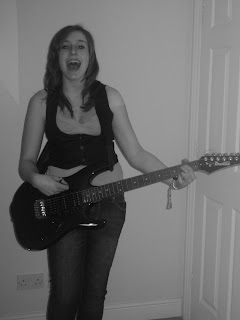I have been given a new deadline; to design and create a double page spread feature for my music magazine in the next fortnight. Based on this, I have begun the basic designing by opening a double page spread (2 A4 pages) in InDesign. Using the skills from my front cover, I used a similar top rectangle section with slanted edges to create a banner for the top of the page. This will house the main headline and tag line to go alongside it.
Using the image I edited earlier on in the project, I have been able to centre the theme of the article around Bon Jovi, a band I am a fan of and know a lot about, and also a band that have been in the music media spot light recently. I have created a fictitious story for the article, as it will take the form of an exclusive interview with the band members and new details about their supposed up-and-coming tour. I have drafted the article and will add it shortly to the page spread.


























